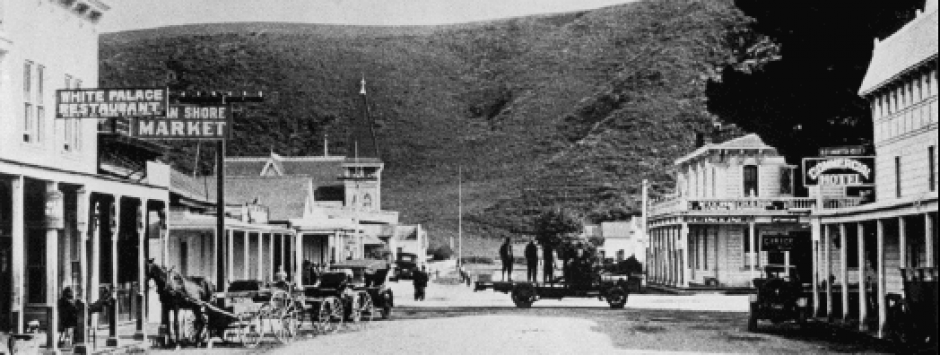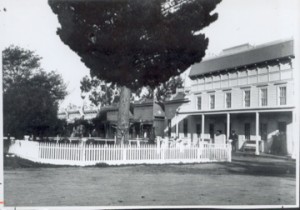By June Morrall
(Photo: The Swanton House.)
The shoreline of Pebble Beach was rocky, and the pebbles, or stones, that been rolled and tumbled by the tides until they were polished smooth were ankle deep. The bright pebbles ranged in size from “a shot to a marble;” there seemed to be an endless variety of colors and shapes. There was a magnetic quality about them–and the place was enchanting.
“The wind blows there like the blazes sometimes,” said pioneer Alexander Moore.
But the strong winds didn’t affect the beach’s reputation as a special place to visit, especially by the nearby community of Pescadero. In these early years, Pebble Beach was the glue that brought the villagers together, for picnics and celebrations of all kinds–the pebbles and the sand on which they lay became sacred ground.
When Moore, a farmer, was nearing 70, he said it wasn’t the pebbles that he was interested in, but, “What took me there mostly was to get something good to eat…” He’d never picked up more than a dozen pebbles off the beach.
“Well, usually when I went there, I went to take ladies and children,” said the dairyman Issac Steele, “to go pick pebbles and play on the beach and picnic….”
Steele said he first rode horseback over the well worn trail to Pebble Beach in 1863. He suspected that were it not for the fascination of the pebbles, fewer people would visit Pescadero. Moore agreed with his neighbor. “…The people find Pebble Beach a nice place to go and lie down and wallow around in the pebbles….”
The highly respected businessman J.C. Williamson, who settled in Pescadero in 1869, visited Pebble Beach “quite often…I have averaged 10 or 12 trips each year.” In 1895 he recalled seeing two or three hundred picnickers there at one time. He had something to say about the road to the beach as well, noting that the people had created the road with their horses and carriages. The road was well worn with chuck holes filled by the local stablemen who brought visitors to the beach.
Henry B. Adair, the roadmaster, who moved to Pescadero in 1875, noted: “…the first time I ever was at Pebble Beach was, I guess, not more than a week after I arrived in Pescadero.”
“If a fellow wanted to take his girl,” said I.C. Steele, “he took her on horseback, either behind him or in front of him….” He remembered “wagon-loads, lumber wagons, there was scarcely anything else in the county there at the time,”–the time being the decade from 1862 to 1872, the years that the Steeles leased the southern portion of the Rancho Ano Nuevo from Loren Coburn.
The pebbles were the big draw at Pebble Beach, but fishing from the rocks was a popular pasttime, too. Alexander Moore observed that “..there is hardly a day that passes without some people driving by my house with a fishing pole tied to their buggy.”

